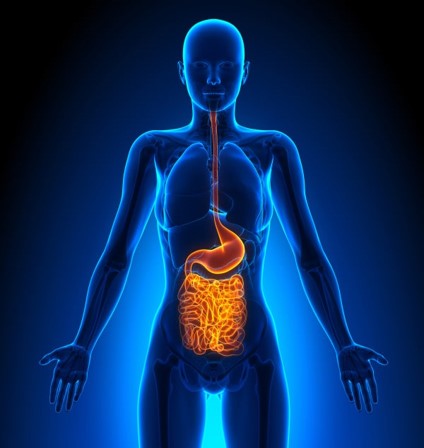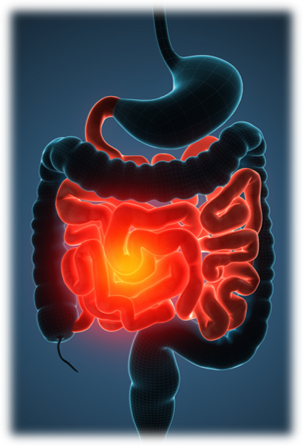EuroPerio, Clinical & Translational Research, Publication Type, Article
Bottoms Up! How can gut microbiome research benefit periodontitis patients?
11 February 2025
A symposium at EuroPerio11 will discuss the latest research on the links between the oral and gut microbiomes, including new insights into how changes in host-microbiome interactions in one environment reflect concomitant changes in the other. This joint session by the EFP and the American Academy of Periodontology (AAP) will also explore emerging approaches to gut microbiota manipulation in managing inflammatory bowel diseases (IBD), which can inform novel approaches to oral microbiota manipulation. Symposium moderator Iain Chapple outlines the territory.

A key concept in studies of the human microbiome is the importance of host site-specificity to sustain specific microbial consortia. This applies to both gastrointestinal and oral niches, where the saturation capabilities of the juxtaposed microbial communities that we host determine health or disease. The gut microbiome is relatively unstable and adversely impacted by environmental stressors—including pro-inflammatory diets, psychological stress, and systemic inflammation—that can induce leakiness in the gut lining. Dysbiosis emerges and leads to altered and destructive immune-inflammatory responses that cause mucosal ulceration and morbidity.
By contrast, the oral microbiome is relatively stable once the permanent teeth erupt. Periodontal dysbiosis can be associated with increased microbial diversity—exactly the opposite of IBD—and plaque biofilm disruption can reverse that dysbiosis.
The so-called “gum-gut axis” is underpinned by evidence for oral to gastrointestinal niche transmission of certain oral bacteria in IBD, including Aggregatibacter, Campylobacter, Neisseria, Enterobectaria, Fusobacterium, Peptostreptococcus, Staphylococcus, and Streptococcus species. Indeed, the latter four organisms have also been identified in IBD biopsies.

Oral-gut transmission appears to be via several routes including blood, saliva (where mucins protect bacteria from stomach acid), keratinocytes, and immune cells. Oral pathogens such as F.nucleatum can evade immune defences, remain viable inside immune cells—including lymphocytes, macrophages, and neutrophils (Trojan horse concept)—and travel in the vasculature to the gut. Moreover, F.nucleatum, K.pneumoniae, and C.consisus can invade intestinal epithelial cells and induce cytokine production (IL-8, IL-1β, TNFα) and downstream inflammation. C.consisus also produces a toxin that disrupts tight cell junctions in the gut lining—thus further increasing gut mucosal permeability—by disrupting the intestinal barrier.
Interestingly, oral pathogens in the mouth can prime pro-inflammatory TH-17 immune cells during periodontitis, which travel to the gut via the vasculature. Here the same gut-tropic pathobionts reach the colon via the mechanisms mentioned above and activate the already primed pro-inflammatory TH-17 and TH-1-cells to cause colitis. There are therefore a series of complex pathophysiological processes through which periodontal pathogens and the associated immune responses to them seem capable of triggering and/or exacerbating IBD.
The plasticity of the gut microbiome lends itself to gut microbiome manipulation through techniques such as faecal microbiota transplantation (FMT). Clinical results for the use of FMT in C.difficile infections has proven to be lifesaving, and emerging evidence also supports benefit in UC. Microbiome manipulation is more challenging in the oral cavity because of the stability of the oral microbiome, and probiotic approaches have met with limited success. However, lessons can be learned from FMT in managing IBD and may inform novel strategies for oral microbiota transplantation (OMT) in the future.

Biography
Iain Chapple is currently professor of periodontology and former director of research for the Institute of Clinical Sciences, and former head of the Dental School (2016-2020), at Birmingham University UK. He is the former scientific editor of the British Dental Journal, former associate editor of the Journal of Periodontal Research and the Journal of Clinical Periodontology and is a current associate editor of Periodontology 2000. He has written 13 textbooks and 35 chapters.
Prof. Chapple was president of the IADR Periodontal Research Group (2006-7), group programme chair (2008-2015), and council representative (2016). At the EFP, he was treasurer (2007-2013), co-organiser of the Perio Workshops (2008-current), chair of the scientific committee and founding editor of JCP Digest (2014-16), and secretary general (2016-2019). He was president of the British Society of Periodontology (2014-2015). Iain was awarded the Royal College of Surgeons' Tomes medal (2011), the IADR Distinguished Scientist (2018), and the EFP’s Eminence in Periodontology Award (2022). He was appointed a Member of the Order of the British Empire (MBE) in 2022 for his services to oral and dental health.
EFP-AAP Joint Session: Bottoms up! What can we learn from gut microbiome research to benefit periodontitis patients? EuroPerio11 | Vienna | Thursday 15 May, 10-30-12.00
EuroPerio11 | Vienna | 14-17 May: Information and Registration




